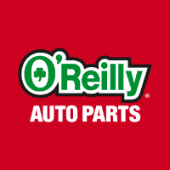-
Welcome to Auto Parts Forum
Whether you are a veteran automotive parts guru or just someone looking for some quick auto parts advice, register today and start a new topic in our forum. Registration is free and you can even sign up with social network platforms such as Facebook, X, and LinkedIn.
2024 ASE P2 Test Primer
-
Similar Topics
-
By OReilly Auto Parts
SPRINGFIELD, Mo., Jan. 02, 2025 (GLOBE NEWSWIRE) -- O’Reilly Automotive, Inc. (the “Company” or “O’Reilly”) (Nasdaq: ORLY), a leading retailer in the automotive aftermarket industry, announces the release date for its fourth quarter and full-year 2024 results as Wednesday, February 5, 2025, with a conference call to follow on Thursday, February 6, 2025.
link hidden, please login to view -




Recommended Posts
Create an account or sign in to comment
You need to be a member in order to leave a comment
Create an account
Sign up for a new account in our community. It's easy!
Register a new accountSign in
Already have an account? Sign in here.
Sign In Now